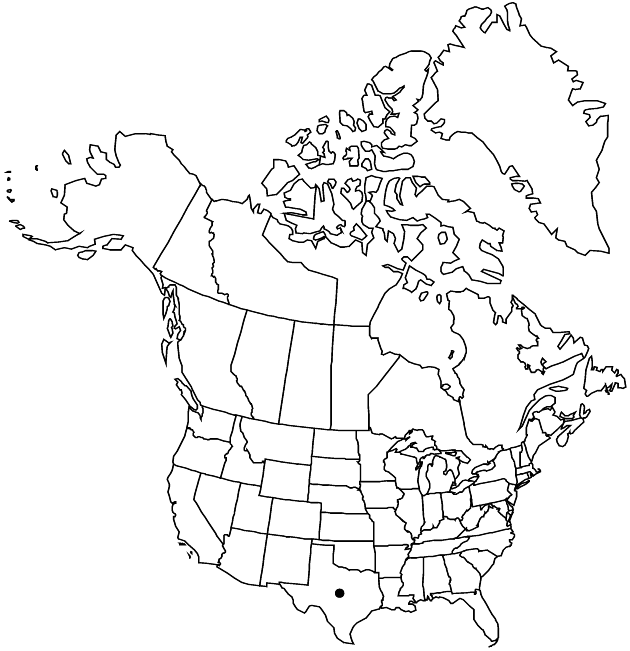Silphium albiflorum
Proc. Amer. Acad. Arts 19: 4. 1883.
Common names: White rosinweed
Endemic
Plants scapiform, 20–75 cm; taprooted. Stems terete, glabrous, hirsute, hispid, or scabrous. Leaves: basal persistent, petiolate; cauline usually alternate, rarely subopposite, petiolate or sessile; blades deltate, elliptic, linear, ovate, or rhombic, 2–40 × 1.5–26 cm, sometimes (proximal) 1–2-pinnately lobed, bases attenuate, cuneate, or truncate, ultimate margins unevenly toothed or entire (distal blades), apices acuminate to apiculate, faces scabrous to hirsute. Phyllaries 23–36 in 2–3 series, outer reflexed, apices acuminate, abaxial faces hispid. Ray-florets 14–30; corollas white. Disc-florets 70–130; corollas white. Cypselae 12–26 × 7–12 mm; pappi 2–5 mm.
Phenology: Flowering late spring–summer.
Habitat: Prairies, open fields, calcareous soils
Elevation: 100–500 m
Discussion
Selected References
None.
Lower Taxa
None.
"broader" is not a number.
... more about "Silphium albiflorum"
hispid +
introrse +
connate +
herbaceous +
acuminate;acuminate;apiculate +
scarious +
absent +
hirsute +
papillate +
bristlelike +
continuous +
petiolate +
persistent +
elliptic +
lobed;rhombic;ovate;rhombic;ovate;linear;deltate +
winged;ribbed;winged;ribbed +
1;15 +
stigmatic +
absent +
White rosinweed +
zygomorphic +
white +
winged +
dimorphic +
staminate +
staminate +
Tex. +
straight +
distinct +
proximal +
1;5 +
bisexual +
dispersed +
singly +
discoid +
indeterminate +
surrounding +
campanulate;hemispheric +
deltate +
reflexed +
2-carpellate +
inferior +
attached +
anatropous +
persistent +
fragile +
falling +
absent +
tough +
thick +
absent +
connate +
persistent +
distinct +
falling +
Proc. Amer. Acad. Arts +
1883 +
pistillate +
absent +
fertile +
paleate +
flat;slightly convex +
fibrous +
exalbuminous +
modifed +
2;3 +
Endemic +
alternate +
branched +
erect +
terete +
continuous +
2-branched +
papillate +
Silphium albiflorum +
Silphium +
species +
cylindric +
narrow +
much shorter +
cylindric +
shorter to longer than campanulate +
perennial +
taprooted +
scapiform +
